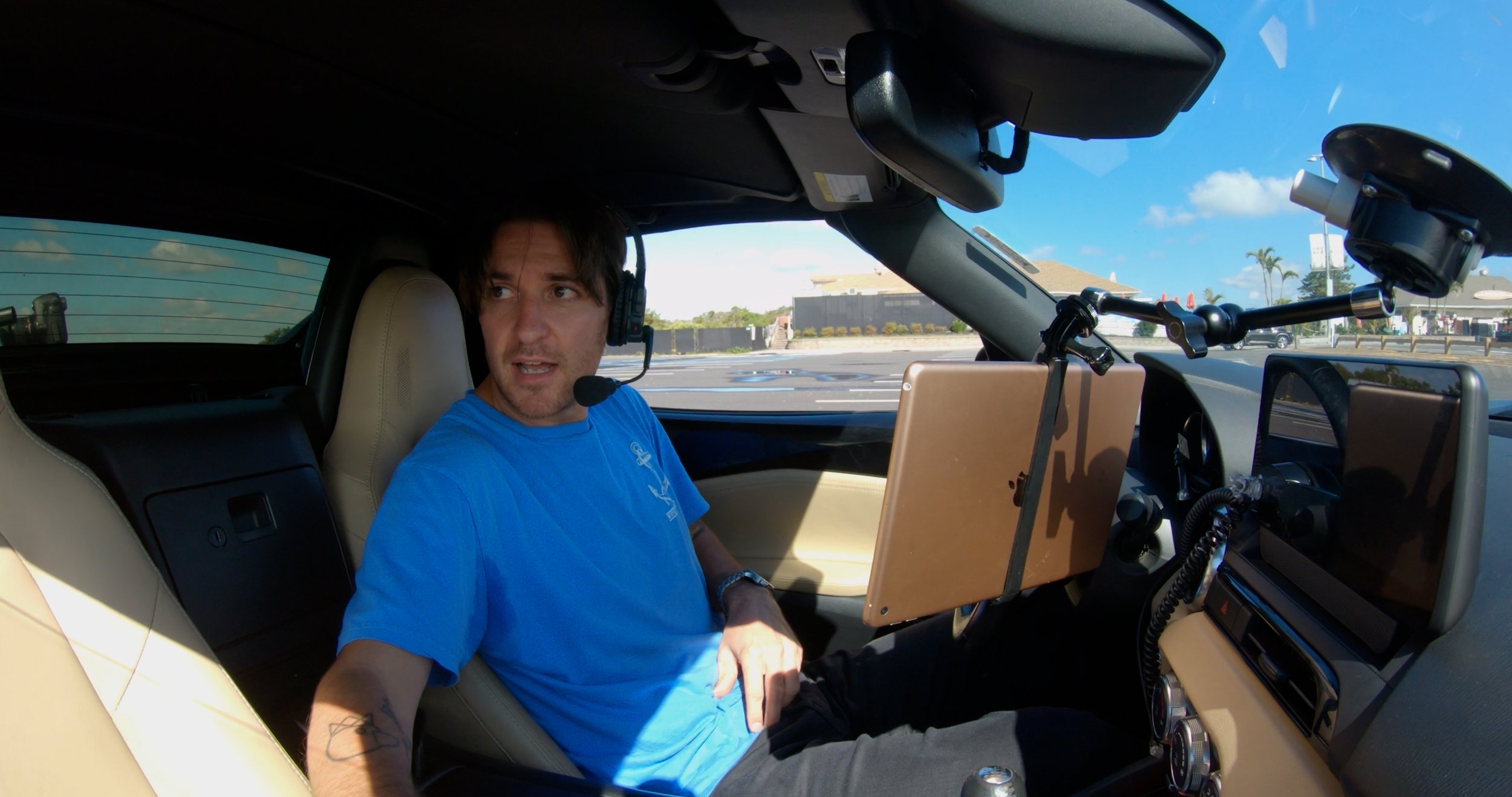Ocean Parkway Cruising
A good ol’ day of dialing in my driving rig. I decided to cruise up and down Ocean Parkway since it’s relatively quiet during the day, and the concrete road has plenty of bumps and jolts—perfect for adjusting the dampers on the Z-axis arm. We shot rollers on a Panasonic Lumix S5 IIX in 5K ProRes. This was my first time using the camera, and I was very impressed with the image quality—particularly the dynamic range and color science. Its lightweight build made the initial gimbal balancing straightforward, which made setup a breeze.
In my cockpit, I use an iPad with the DJI Ronin app to actively track the car, manage camera settings, and control pan, tilt, and roll—either through the on-screen virtual joystick or with an Xbox One controller. Ideally, it’s best to have a passenger handle control and monitoring, but it can be done solo if you stay focused on the road. My friend James used hands-free wireless headsets so we could communicate between cars.
James brought his 1962 Ford Thunderbird, which looked incredible cruising down the long, open stretches of Ocean Parkway. Several components need power—the gimbal, camera, and RavenEye video transmitter that casts the image to the iPad. I used to run everything off a single V-mount battery, but I recently modified the D-tap cable to connect directly to the car’s 12V port for constant power. That way, I can focus on shooting without worrying about battery consumption.
My Mazda MX-5 is the perfect car for this kind of work. It’s small, lightweight (just 2,100 lbs), and incredibly nimble—ideal for tracking shots and quick adjustments on the road.
Even though cameras are getting smaller each year—like the redesigned DJI Osmo—this system still offers greater control and customization depending on the shooting scenario. Larger cinema cameras aren’t shrinking down to the size of an iPhone anytime soon, so this setup isn’t going away.
I mount everything using three aluminum bracing tubes and two commercial vacuum cups. The main vertical tube is secured with a clamp bracket to the car’s threaded tow mount, which ties directly into the frame. It’s reassuring knowing the setup can handle the payload safely, even at speed.




